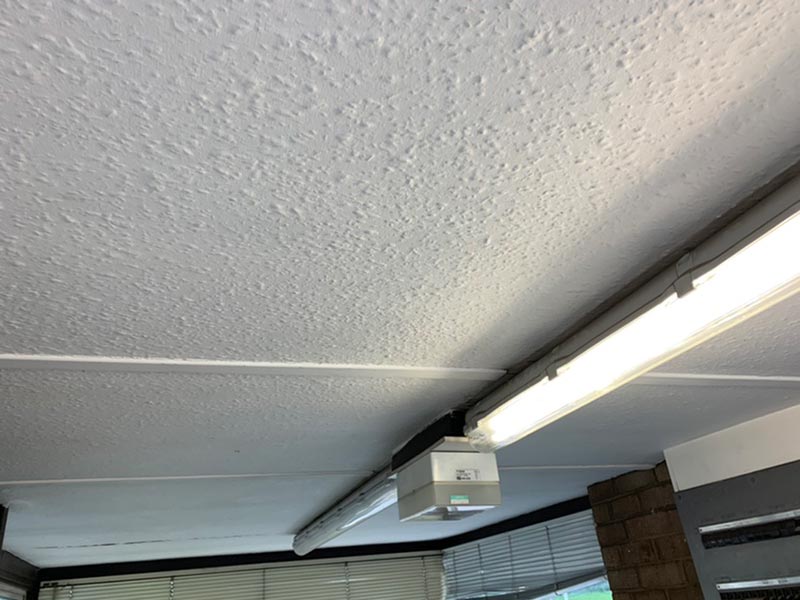Asbestos, once a popular building material due to its fire-resistant properties, is now recognized as a serious health hazard. In this comprehensive guide, we delve into the potential risks associated with “Asbestos In Ceiling Plaster” and explore the necessary steps to ensure a safe living environment for you and your loved ones.

The Silent Threat: Asbestos in Ceiling Plaster
Asbestos was widely used in construction materials, including ceiling plaster, until its dangers became apparent. Asbestos in ceiling poses a particular concern as it can release tiny fibers into the air, which, when inhaled, may lead to severe health issues. Understanding the presence of asbestos in your home is crucial for proactive safety measures.
Knowing the signs of asbestos in ceiling is the first step in safeguarding your home. Older homes, typically constructed before the 1980s, are more likely to contain asbestos. If your ceiling plaster has a textured, stippled appearance, there’s a possibility it contains asbestos. Professional inspection is recommended for accurate identification.
Read too: Understanding and Addressing a Crack in the Basement Ceiling: Unveiling the Dilemma
The Health Risks of Asbestos Exposure: Asbestos in Ceiling Plaster
Respiratory Issues
Asbestos in ceiling can become hazardous when disturbed, releasing microscopic fibers into the air. Inhalation of these fibers can lead to respiratory issues, including shortness of breath, persistent coughing, and in severe cases, conditions such as asbestosis.
Mesothelioma
Exposure to asbestos is strongly linked to the development of mesothelioma, a rare but aggressive form of cancer. This disease primarily affects the lining of the lungs, abdomen, or heart and has a long latency period, often manifesting decades after initial exposure.
Safeguarding Your Home: Asbestos in Ceiling Plaster
Professional Inspection and Removal
If your home was built before the 1980s, it’s advisable to seek professional inspection for asbestos. Certified asbestos removal specialists can assess the situation and, if necessary, safely remove asbestos-containing materials like ceiling plaster. DIY removal is strongly discouraged due to the associated health risks.
Encapsulation
In some cases, encapsulation may be a viable option. This involves applying a sealant to asbestos-containing materials, preventing the release of fibers. However, encapsulation is not a permanent solution and may require periodic monitoring.
Safe Renovation Practices
If you plan to renovate a home with potential asbestos-containing materials, take precautions. Ensure proper containment measures, use protective equipment, and consider professional assistance to minimize the risk of asbestos exposure during the renovation process.
Conclusion: Prioritizing Health and Safety
In conclusion, awareness of the presence of “Asbestos In Ceiling Plaster” is crucial for maintaining a healthy living space. Whether you’re buying an older home or considering renovations, understanding the risks associated with asbestos exposure is paramount. Prioritize professional inspection, safe removal practices, and vigilant monitoring to ensure a home that is free from the dangers of asbestos.